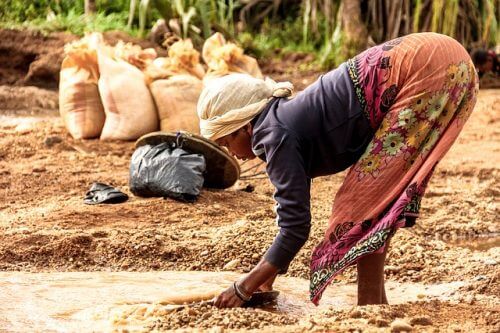One of the more serious environmental hazards is caused by the encounter between people and wild animals. The encounter usually happens when people invade the territory of animals, and its results are almost always frictions that end in harming the wild animals.

One of the more serious environmental hazards is caused by the encounter between people and wild animals. The encounter usually happens when people invade the territory of animals, and its results are almost always frictions that end in harming the wild animals.
More than anywhere else, friction occurs in Africa, where there is constant competition for living space. Population explosion causes people to invade areas where wildlife used to live, and people who invade new areas use resources that are taken from the wildlife. This is the case with agricultural areas, industry, transportation, etc.
If significant steps are not taken, the frictions will increase and the damage to the wildlife in particular and the natural environment in general will increase.
For example, in Gabon in the "Crystal Mount" reserve, indigenous farmers became frustrated and angry when wild animals destroyed their crops and thus threatened their existence. Is there no middle ground?
There is a middle way. When the natives will continue their daily lives according to ancient traditions, the purpose of which is minimal harm to the wild animals and the environment.
Recognizing the problem, tools and methods were adopted that indigenous communities have used over many generations alongside wild animals in order to prevent friction today. Tools and methods rather encourage the use of resources that are currently defined as sustainable.
The only tribal community in Kenya that operates a rhino sanctuary is in the north of Mount Kenya where members of a branch of the Maasai live called Lakipiak which in their language means "people of the wild animals". The rhino sanctuary that was established on the community's territory was the initial push for actual activity to preserve the natural environment. In the next step, the people of the community stopped the cutting of the trees, which allowed regeneration and growth of more food for wildlife. This is how they managed to moderate and calm the frictions that happened due to the intrusion of wild animals into populated areas. The frictions we exacerbated during periods of drought were avoided because of proper management of the area.
Thus, following hundreds of years of adaptation and adaptation to difficulties, the natives demonstrated their ability to live and exist closely and together with wild animals and at the same time continue their traditional existence as shepherds. In other words, an indigenous community continues in a traditional form of existence in which the natural environment is preserved, despite "modern people" who continuously violate their rights, rob their land, "imprison" them in reserves and denigrate their heritage, tradition and culture.
So much for a description of the situation of an indigenous community that is an example of similar situations around the world. Following a new trend, the scientific community recognizes the importance of indigenous populations for the preservation and prevention of damage to biological diversity. For example, according to sources at the UN: "Active integration of natives in wildlife conservation is a key to sustaining biological diversity along with ensuring a sustainable existence for the natives."
The world is facing an urgent need to preserve biodiversity. Strengthening the power of indigenous communities to act on the issue with the help of the international community will allow the improvement of conservation. The culture and tradition of natives is integrated into the proper management of the natural environment, since their lives are not separated from nature and the sustainable use of resources is a vital need for them. The empowerment of the indigenous communities combined with the information accumulated over many generations is essential for the continued existence of future generations of both people and animals.
The relationship between people and wildlife is highlighted in the "Food and Agriculture Organization of the United Nations" (FAO) quarterly, a quarterly that is published in conjunction with international conservation organizations and includes studies from different countries. The studies describe how natives improve their standard of living while preserving the environment, provided they are given the opportunity to implement their approach in their territory. Bodies such as FAO and IUCN state that "natives and traditional communities are harmed by conservation laws because of unfair treatment and forceful conservation policies, treatment and policies that fail to understand the role and place of the natives in the management and conservation of biological diversity."
In the decisions of conservation bodies it is emphasized that "natives have the right to natural resources and living areas in which they live and exist for generations". "The need to strengthen the participation of the natives in all conservation initiatives and development policies in their territory is emphasized."
The conservation bodies "recognize the unique information that the natives possess, important information for the purposes of conservation options and the sustainable use of natural resources. Even "the United Nations Environmental Program" (UNEP) recognizes "the importance of the participation of natives who possess traditional knowledge acquired over generations and is an unfailing source of environmental management and conservation activities." "The proximity of the natives to nature created a relationship of mutual dependence, a dependence that results in the use of resources, management and sustainable development."
Cutting down trees, mining minerals and various activities of exploiting resources, to which are added industrial pollution and climate changes, endanger the existence of indigenous populations, a danger that can be avoided by their participation in the management of the area to the point of preventing projects.
After all this it is worth mentioning that many hazards and disasters will be prevented if instead of controlling the environment for the sake of the human population there is control of the human population for the sake of the environment.
